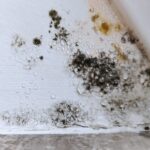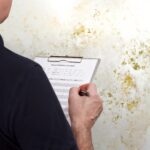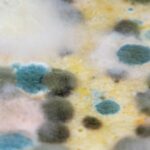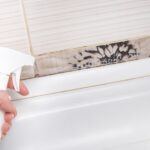How to Get Rid of Mold in Your Car: A Simple Guide

Mold in your car is a pretty common problem, especially in places with a lot of humidity or if the car has been exposed to water. It can grow on seats, carpets, and even inside the air vents, causing unpleasant smells and health risks. Mold spores in your car can trigger allergies, breathing problems, and other issues, so it’s important to deal with them as soon as possible. If you leave mold in your car untreated, it can damage the interior and lead to expensive repairs later. Getting rid of mold in your car is about more than just making it smell better; it’s about protecting your health and your car’s long-term condition.
How Mold Grows in Cars
Mold loves damp, humid spaces, which makes your car a perfect place for it to grow if there’s moisture around. Spilled drinks, wet clothes, or leaving your windows cracked during a rainstorm can create the ideal environment for mold. Even keeping your windows closed in hot, humid weather can trap moisture inside and make the problem worse.
Mold tends to show up in areas where water sticks around. You’ll often find it on car seats, carpets, and floor mats, especially if they’ve been exposed to water. Air vents can also be a sneaky spot for mold, as condensation can build up there. Other areas like under the upholstery or in the trunk can develop mold if water gets in and doesn’t dry properly.
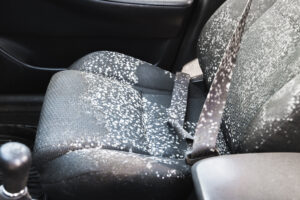
Signs of Mold in Your Car
A musty smell is usually the first clue that mold might be in your car. It’s the kind of odor that doesn’t go away no matter how many air fresheners you use. You might also see dark green, black, or white spots on your seats, carpets, or other surfaces. These spots are clear signs that mold has taken hold.
Sometimes, mold isn’t so easy to spot. It can hide in places like your air vents, where you might notice the smell when you turn on the AC or heater. Check under the seats, inside the trunk, and beneath the floor mats for damp or wet areas as these are prime hiding spots for mold to grow.
What You’ll Need to Remove Mold from Your Car
Getting rid of mold in your car starts with having the right tools and supplies. Mold can release harmful spores while you clean, so it’s important to protect yourself and use the proper materials. Here’s what you’ll need:
- Gloves: Keep your hands safe from mold and harsh cleaning chemicals.
- Mask: An N95 mask helps block mold spores so you don’t breathe them in.
- Cleaning Solutions: You can use store-bought mold cleaners or natural options like white vinegar, baking soda, or hydrogen peroxide.
- Scrubbing Tools: Soft brushes, sponges, or microfiber cloths are perfect for cleaning without scratching surfaces.
- Vacuum Cleaner: Use one with a HEPA filter to remove loose mold and dirt safely.
- Spray Bottle: Makes it easier to apply your cleaning solution evenly.
Natural cleaners like white vinegar are especially effective. Vinegar kills around 80% of mold species and is simple to use. Baking soda mixed with water is another great option because it not only removes mold but also helps with odors. For stubborn mold stains, hydrogen peroxide can do the trick. Just remember to test any cleaner on a small hidden area first to make sure it won’t damage your car’s interior.
Once you have these supplies ready, you are all set to safely clean the mold and get your car fresh again!
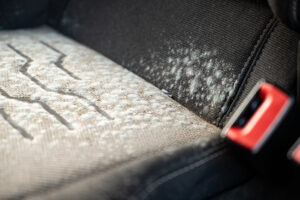
Simple Guide to Removing Mold from Your Car
Getting rid of mold in your car might seem like a big task, but it’s actually pretty easy when you break it down. Here’s a simple step-by-step guide to help you tackle it:
Step 1: Prepare Your Car
Start by removing all loose items like floor mats, seat covers, and anything else inside. Check these items for mold too, as they might need cleaning as well. Park your car outside if you can, in a sunny spot with good air circulation. This helps keep the mold spores from sticking around as you clean.
Step 2: Clean the Moldy Spots
Put on gloves and a mask for safety. Spray a mold cleaner or a mix of vinegar and water (half-and-half) on the moldy areas. Let it sit for a few minutes to loosen the mold. Then, scrub the spots with a brush or cloth until the mold is gone. If there are stubborn stains, you can try using hydrogen peroxide, but don’t soak the fabric too much to avoid damage.
Step 3: Tackle Hidden Mold
Mold can hide in tricky spots like air vents and under the seats. Use a vacuum with a HEPA filter to remove any loose spores. For the air vents, spray a mold cleaner into them and let it sit for a bit. Turn on your car’s air system to blow out the remaining spores. If there’s mold in the upholstery that’s hard to reach, you might need a steam cleaner or professional help.
Step 4: Dry the Car Thoroughly
Mold loves moisture, so drying your car is crucial. Use fans, a hair dryer, or just leave the windows and doors open to let fresh air in. If it’s sunny, leave your car in direct sunlight. It can help speed up drying. Check to make sure there are no damp spots left, especially in hidden areas.
Step 5: Eliminate Any Odors
Even after cleaning, the moldy smell might stick around. To get rid of it, sprinkle some baking soda on the carpets and seats, let it sit for a few hours, and then vacuum it up. You can also try activated charcoal or an odor neutralizer to absorb any remaining smells.
By following these simple steps, you’ll not only remove the mold but also keep your car fresh and clean in the future!
How to Keep Mold Out of Your Car
It’s important to do a few simple things to help keep mold from returning. Mold can be easily prevented with some easy habits that reduce moisture.
- Let Fresh Air In
Good airflow is important to keeping moisture from building up. On hot and humid days, leave your windows cracked open a little to let fresh air circulate. When you’re driving, use your car’s air conditioning. It not only cools the air but also helps reduce humidity, which keeps condensation from forming inside your car. - Keep Things Dry
Mold loves moisture, so it’s important to avoid leaving anything wet in your car. If you’re caught in the rain or have damp clothes, try to dry them off before putting them in the car. Keeping a towel or blanket in the car is a great idea for quickly wiping away any moisture. You can also use moisture-absorbing items like silica gel packets or charcoal to help keep the air dry. - Clean Your Car Regularly
Cleaning your car regularly can help prevent mold. Vacuum the carpets, mats, and seats often to get rid of dirt and moisture. Wipe down surfaces and clean your air vents, especially after rainy days or trips to the beach.
Simple Ways to Stop Mold from Growing in Your Car
Mold in your car might seem like a minor issue, but if it’s not taken care of, it can quickly become a bigger problem. Not only can mold affect your health, but it can also damage your car’s interior. By following the steps below, you can remove mold effectively and take simple steps to prevent it from coming back.
The best way to stop mold from growing is by keeping your car clean, dry, and well-ventilated. If you notice mold coming back despite your efforts, it could be time to call in a professional. With a little attention, you can keep your car fresh and mold-free for years!
Ready to tackle mold in your car and keep it fresh? Book an online consultation with our experts today and get personalized advice!
FAQs about Mold in Your Car
How can I tell if my car has mold?
If your car has a musty smell that won’t go away, that’s a big clue. You might also spot dark patches or spots on the seats, carpets, or other fabrics. If you notice these signs, it’s time to take care of the problem.
Can mold in my car make me sick?
Yes, mold can cause health issues like allergies, asthma, and breathing problems, especially if you’re sensitive to mold. That’s why it’s important to deal with it quickly to protect your health.
Can I get rid of mold without professional help?
Yes, in most cases, you can clean up mold on your own with things like vinegar, baking soda, or a mold-specific cleaner. But if the mold has spread a lot or caused damage to your car’s interior, it’s a good idea to get professional help.
How long does it take for mold to grow in my car?
Mold can start growing in just 24 to 48 hours if there’s moisture, heat, and poor airflow. The longer it’s left unchecked, the harder it is to get rid of.
Will mold come back after cleaning my car?
If you keep your car dry and well-ventilated, it’s less likely that mold will come back. Regular cleaning and moisture control are the best ways to stop mold from growing again.
Can I use bleach to clean mold in my car?
While bleach does kill mold, it’s not the best choice for car interiors. It can damage fabrics and plastics and might not be very effective on upholstery. It’s better to stick with gentler cleaners like vinegar or a mold-specific product.
What’s the best way to dry my car after cleaning mold?
You want to make sure your car is completely dry to prevent mold from coming back. Use fans, open the doors and windows, or park it in the sun to speed up the drying process. Just make sure all damp spots are dry before you close the car.
Can I use a steam cleaner to remove mold in my car?
Yes, a steam cleaner is a great option for getting rid of mold, especially from upholstery and carpets. The heat kills the mold spores, and the steam can reach deep into the fabrics. Just be sure to dry everything thoroughly afterward to keep mold from returning.
What are moisture absorbers, and how do they help prevent mold?
Moisture absorbers, like silica gel packets or activated charcoal, soak up extra moisture in your car. These are especially useful in humid climates or if your car tends to get damp. By reducing moisture, they help keep mold from growing.
Is it necessary to clean the air vents if there’s mold in my car?
Yes, cleaning the air vents is important. Mold can grow in the vents, and when you turn on the air, it can spread spores throughout the car. Using a mold-killing spray or a vacuum with a HEPA filter will help clean the vents and keep the air fresh.



